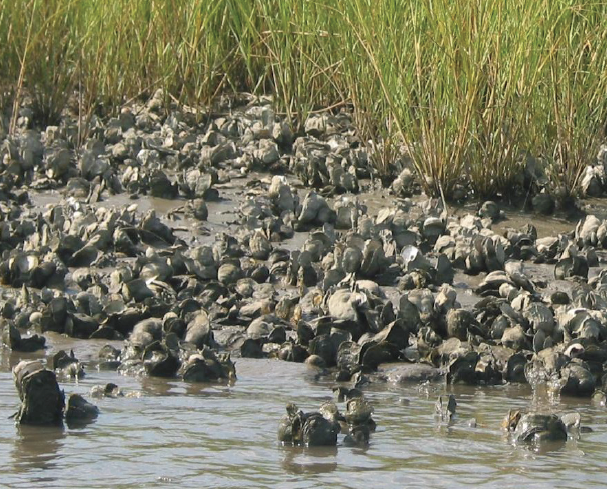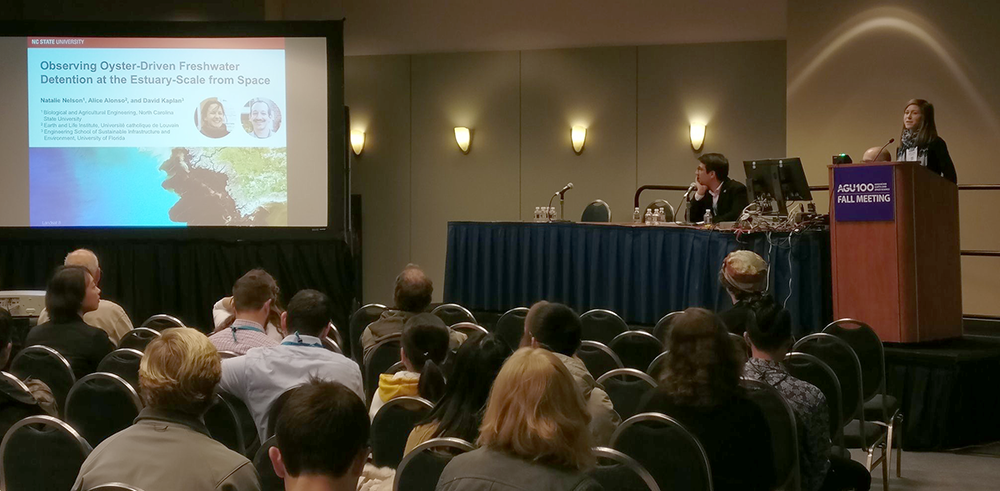
Dr. Natalie Nelson is an Assistant Professor in the Biological and Agricultural Engineering department of North Carolina State University. Here is what Natalie shared with us about the work she is presenting today at #AGU18:
Observing Oyster-Driven Freshwater Detention at the Estuary-Scale from Space
What are the major findings of this research?
Our study offers evidence of oyster reefs driving estuary-scale detention of freshwater in the Suwannee Sound, an estuary in Florida’s Big Bend, during periods of relatively high freshwater influence.
What are the implications of your findings?
Our collaborators previously demonstrated that oyster reefs may serve as porous dams, but they formulated their conclusions based on point-scale salinity measurements collected just adjacent to an oyster reef (Kaplan et al., 2016). Our work builds upon these previous findings by showing that oyster reefs influence estuarine hydrology not only in their immediate environment, but also across the entire estuary (i.e., several kilometers).
Across the United States, we have observed widespread loss of oyster reefs, and many remaining reefs are threatened or severely degraded. Our results shed light on the ways in which oyster reefs influence estuarine hydrology, which provides needed insight on the ecological functions and services we may have lost through the historical disappearance of oyster reefs. Further, by understanding feedbacks between oyster reefs and coastal hydrology, we will be better equipped with the knowledge needed to successfully restore reef systems.
What insight did you gain from Landsat that would have been difficult to ascertain otherwise?
Landsat data allowed for us to observe estuary-scale freshwater detention under diverse hydrologic conditions and over relatively long periods of time. Usually, we would have only been able to develop our findings through the use of computer simulation models, which can be prohibitively difficult to run accurately. Landsat data created new opportunities for us to discover unique relationships between oyster reefs and freshwater dynamics across large scales and multiple time points.
Has your research thus far provided water managers with any input on oyster reef restoration?
Not yet, but we are in communication with researchers who recently completed a large-scale restoration project of the oyster reef we studied in our analysis. We are exploring opportunities to utilize Landsat data to monitor the restoration project and characterize pre- and post-restoration conditions.

Co-authors:
Alice Alonso
Université Catholique de Louvain
David A Kaplan
University of Florida
This work is supported by the USDA National Institute of Food and Agriculture, Hatch project 1016068
Anyone can freely download Landsat data from the USGS EarthExplorer or LandsatLook.
Further Reading:
+ Landsat at #AGU18
+ Where Rivers Meet the Sea—Envisioning Science with Landsat
+ A Blackwater River Meets the Sea, NASA Earth Observatory






